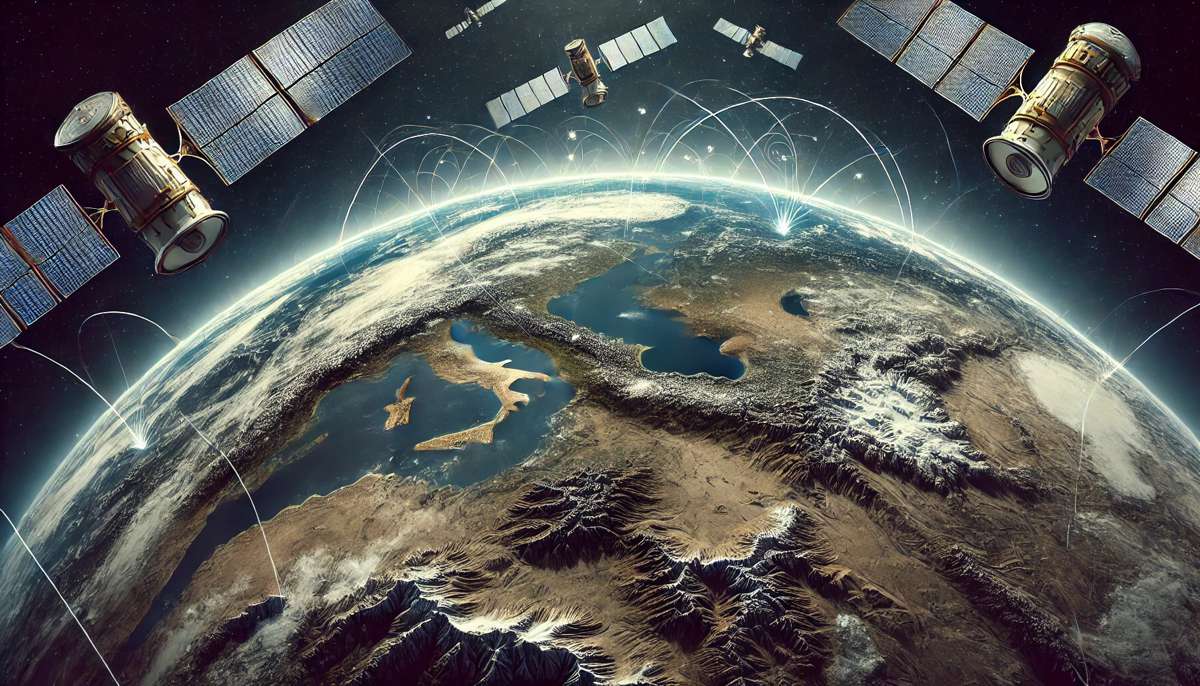Enhancing the removal of Methane with Sahara Dust
The study by Maarten van Herpen et al., entitled “Photocatalytic Chlorine Atom Production on Mineral Dust-Sea Spray Aerosols over North Atlantic,” was funded in part by the NGO Spark Climate Solutions. It incorporates a proposed new mechanism whereby blowing mineral dust mixes with sea-spray to form Mineral Dust-Sea Spray Aerosol (MDSA).
The results suggest that MDSA is activated by sunlight to produce an abundance of chlorine atoms, which oxidize atmospheric methane and tropospheric ozone via photocatalysis. Largely composed of blowing dust from the Sahara Desert combined with sea salt aerosol from the ocean, MDSA is the dominant source of atmospheric chlorine over the North Atlantic, the study finds.
The study relies on a combination of global modelling and laboratory and field observations, including air samples from Barbados showing seasonal depletion of the stable isotope 13CO, an anomaly which puzzled scientists for 20 years. They knew observed changes in 13CO and C18O were evidence of chlorine atoms reacting with methane, and that carbon monoxide is the first stable product in atmospheric methane oxidation. But the known sources of atmospheric chlorine could not account for the degree of depletion in 13CO, until now.
Using a global 3-D chemistry-climate model (CAM-Chem), van Herpen et al. found that when increased chlorine from the MDSA mechanism was incorporated into the model, the results agreed well with the Barbados data and explained the 13CO depletion.
If the MDSA effect observed in the North Atlantic is extrapolated globally, and if its efficiency is similar in other parts of the world —two areas that aren’t yet well understood and require further research— global atmospheric chlorine concentrations might be roughly 40% higher than previously estimated, the study finds. Factoring this into global methane modelling could potentially shift our understanding of the relative proportions of methane emissions sources.
Methane is a potent greenhouse gas, with a Global Warming Potential (GWP) 83 times higher than carbon dioxide over 20 years and 30 times higher over 100 years, accounting for about a third of modern warming. Atmospheric methane concentrations, now nearly 2.6 times higher than in pre-industrial times, are rising at an accelerating rate, with the largest annual increases on record occurring in 2020 and 2021. Anthropogenic methane emissions are known to be the cause of the majority of the overall rise, with elevated natural emissions and atmospheric chemistry changes resulting from anthropogenic emissions of various gases also playing a part.
While the reason for the recent acceleration is not well understood, the van Herpen et al. study may have found an important clue. Its conclusion that there is greater active chlorine than previously thought, impacting 13C, indicates a possible increase in methane from biological sources such as agriculture and wetlands. This suggests biological methane may have played a slightly larger role than previously estimated.
“Methane emissions from biological sources such as wetlands and agriculture may be growing as global temperatures rise,” said Maarten van Herpen, lead author of the PNAS study. “But recent increases in dust from North Africa have probably increased methane oxidation in the atmosphere, partly masking the growth in biological methane emissions. Adjusting atmospheric modelling to take this into account may show that methane emissions from biological sources are rising even faster than we thought.”
“When these findings are incorporated into methane budgets it is likely to increase our assessment of how much methane comes from biological sources,” said University of Copenhagen professor Matthew Johnson, who co-authored the study. “While methane oxidation from MDSA is relatively small in terms of global methane, our data shows it is causing large changes in the abundance of 13C in methane, which is used to determine source contributions. The past few years have seen atmospheric methane increase at an increasing rate, more than ever before, and it is important to understand the cause. Models need to take the revised chlorine isotope shift into account to get a clear picture of the increase in biological methane, which has been identified as a critical tipping point.”
How the MDSA mechanism may operate in other parts of the world is not well understood and requires further research, the study argues. Follow-on research is underway.
“Our current research is focused on getting a better understanding of what exactly influences how much methane MDSA particles are removing from the atmosphere,” said van Herpen, “To do that, we are analyzing air samples from across the North Atlantic, provided by atmospheric observatories and commercial ships. Seafarers are helping advance our research by filling flasks with air as they cross through the African dust cloud. We have collected 500 flasks so far. Early results are looking very encouraging, but we need a full year of data before we can draw conclusions.”















